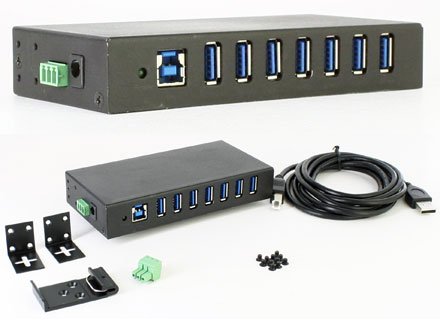
I bought the components that I did not have on hand from Digi-Key, (2) LT1084CT-5#PBF-ND transistors, (2) P5139-ND capacitors, and (4) C4SMF-BJS-CROU452-ND LED's. Each individual circuit has an LED after the fuse so I know if the fuse blows. Each 12 volt outlet is fused and the USB outlets are fused as 2 pair, so I have 4 fuses total. What I made has 2 12 volt sockets and a 4 slot USB outlet bank off of a CPU board. I built this circuit for my truck, it only has 1, 12 volt outlet. They are nice because of their screw terminals.

Of course, you can also use an existing 12v-5v converter in your car, be it light duty, medium, or heavy duty or use these nice power adaptor that are meant to be integrated into other projects or this beefier waterproof, super high power alternative with a heatsink. Also, if you really want to protect your circuit badly, just put one on both sides.

So, if you want 1.5 amps for your USB ports, then you select a 0.6amp fuse, if you want 2.5 amps at 5v, you select a 1 amp fuse, if you want 3.75 amps, you select a 1.5 amp fuse, etc.). Because we put the fuse on the 12v side, (which can vary from 11.5-12.5 volts, we have to use a value 2.5x smaller than what we want on our USB side. More information on the fuse: you can use a higher rated one if you use a different transistor that can take higher amperage. If you have a strange LED or want to make it brighter, please use this resistor calculator. Any LED will do, here are the values for the most common LEDs : 1.2v = 220ohm, 1.6v = 180ohm, 2v = 180 ohm, 2.2v = 150ohm. if you choose to add an LED, you need an LED and an appropriate resistor for 5V.Header boardsare a great and easy way to do this. For higher amps (many devices at once), use a TO220 ( and a bigger fuse) a L7805CV voltage regulator for lower amps.2 different colors of wire (so that you don't get confused later on).But the Olixar was close behind, performing well above its tiny stature and price, as did the high- wattage Anker. Nekteck’s Type-C charger combined power, flexibility and the best charge result with a good price to take the top spot. Points were awarded for build quality, power-on LED, charge performance, number and type of sockets, wattage and cabling, all of which was balanced against price. After 30 minutes we noted the charge increase. Using a standard 12V car socket, we connected each adaptor to a Samsung S10e with around 50 per cent charge. Overall, the adaptors tested here charged at the same rate whether under load (running a sat-nav app) or without. You should check the wattage capabilities of an adaptor 7.5W-10W is currently enough to fast-charge the latest iPhone/Android devices, but many tablets and notebooks can also be charged via USB-C, which means a much higher wattage will be required. Depending on your device, you may need an adaptor or a specific cable, which will add to the cost, unless it’s included. And if you have one of the latest smartphones, you’ll need a suitable USB adaptor to make the best of its fast-charge ability.ġ2V car sockets usually provide 5V of current, but most adaptors boost the output to 9V, and feature standard USB sockets or the latest USB-C type. Charging your phone while you drive makes a lot of sense, especially if you use it for work.


 0 kommentar(er)
0 kommentar(er)
